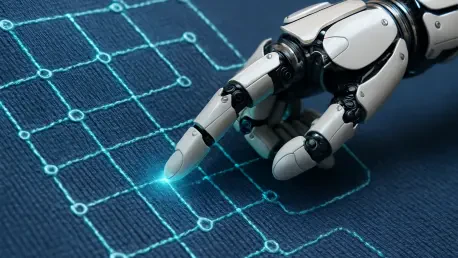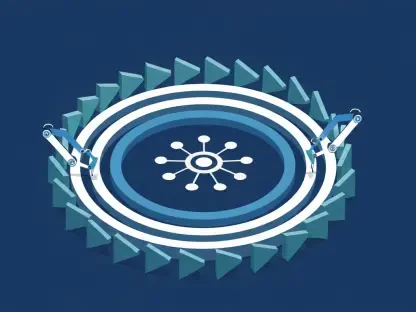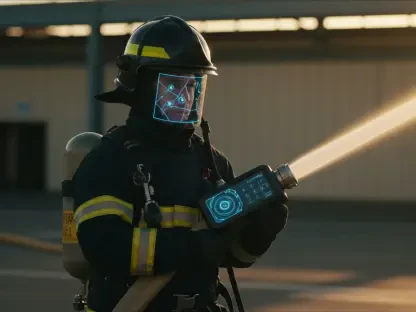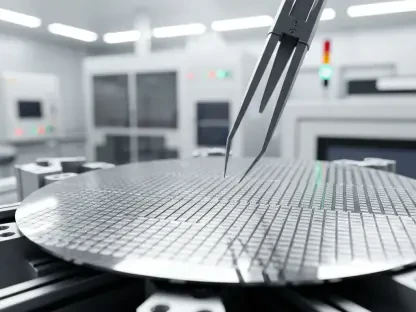Welcome to an exciting conversation with Oscar Vail, a renowned technology expert whose pioneering work in robotics and emerging fields like quantum computing has positioned him at the cutting edge of innovation. Today, we’re diving into his team’s groundbreaking development of electronic textile (E-textile) technology, a fabric that mimics human skin to give robots a sense of touch. Our discussion explores the inspiration behind this innovation, the unique features that set it apart, its potential to revolutionize industries, and the fascinating science that makes it all possible. Join us as we uncover how this technology could transform human-robot collaboration and beyond.
Can you tell us what sparked the idea to create this electronic textile technology for robots?
The inspiration came from observing how robots often struggle with basic tactile tasks—things like grasping objects without dropping or crushing them. We wanted to address this gap by creating a solution that could replicate the nuanced sense of touch humans have. It started as a challenge to improve robotic dexterity for real-world applications, and the idea of mimicking human skin emerged as a natural fit. Human skin is incredibly sensitive and adaptable, so we aimed to engineer a material that could offer robots a similar capability to feel pressure and detect subtle movements.
How does this E-textile stand out compared to other methods used to enhance a robot’s sense of touch?
Unlike traditional approaches that rely on cameras or complex sensor arrays, our E-textile is a simpler, more cost-effective solution. Cameras can provide visual data, but they often lack the finesse to detect subtle tactile feedback like pressure or slippage. Our technology integrates directly into the robot’s structure as a flexible, skin-like fabric, offering a more intuitive and responsive interaction with objects. It reduces the need for bulky equipment and brings down costs, making it a practical choice for widespread use.
Could you walk us through how this technology replicates the way human hands perceive pressure and slipping?
Absolutely. We focused on replicating two key aspects of human touch: the ability to sense pressure and to detect when an object is slipping. The E-textile is embedded with sensors that mimic the nerve endings in our skin, picking up on minute changes in force and movement. When an object starts to slip, the sensor detects the friction and subtle shifts, sending immediate feedback to the robot to adjust its grip. It’s about creating a dynamic response system that feels almost instinctive, much like how our hands react without conscious thought.
You’ve mentioned the tribovoltaic effect in your work. Can you explain what that is in everyday terms?
Sure, the tribovoltaic effect is a fascinating phenomenon where friction between two materials generates a small electric current. Think of it like static electricity you might feel when rubbing a balloon on your hair, but on a microscopic level. In our E-textile, when an object moves or slips against the fabric, this friction creates a detectable electric signal. That signal tells the robot to tighten or adjust its grip instantly. It’s a crucial mechanism for enabling precise control during tasks like holding or manipulating objects.
How does the response time of this sensor compare to human touch, and what does that mean for its applications?
We were thrilled to find that our sensor’s response time is very close to human capabilities, ranging from less than a millisecond to about 38 milliseconds, depending on the scenario. Human touch typically reacts within 1 to 50 milliseconds, so we’re right in that sweet spot. This speed is a game-changer—it means robots can handle tasks in real-time, whether it’s catching a falling object or performing delicate operations. It opens up possibilities for applications where timing and precision are critical, like in manufacturing or even surgical assistance.
Can you share some details about the robotic gripper used in your experiments with this technology?
We integrated the E-textile sensor into a 3D-printed robotic gripper designed to be compliant, meaning it can adapt its firmness based on feedback. With the sensor, the gripper could detect slippage and dynamically adjust its force. For instance, during tests, if we tried to pull an object like a copper weight from its grasp, the gripper sensed the movement and tightened up immediately. This adaptability made it much better at tasks requiring in-hand manipulation, which were previously challenging for robotic systems.
What are some of the most promising future uses you envision for this E-textile technology?
The potential is enormous. In manufacturing, it could enable robots to work alongside humans more seamlessly, handling tasks like assembling delicate components or packaging with precision. Beyond that, we see huge opportunities in healthcare—think robotic surgery tools that can feel tissue texture or prosthetic limbs that give users a real sense of touch. These applications could significantly improve outcomes and quality of life, making interactions between humans and machines more natural and effective.
What is your forecast for the future of tactile sensing in robotics?
I’m incredibly optimistic about where tactile sensing is headed. As technologies like our E-textile evolve, I believe we’ll see robots becoming far more integrated into everyday life, with a level of dexterity and sensitivity that rivals human capabilities. Within the next decade, I expect advancements in materials and AI to push these systems even further, enabling robots to perform complex, nuanced tasks in unpredictable environments. It’s not just about functionality—it’s about creating machines that can truly collaborate with us in a meaningful way.









